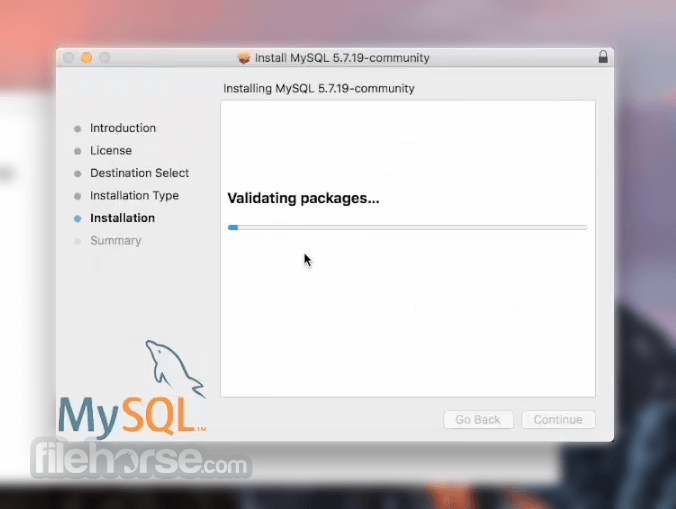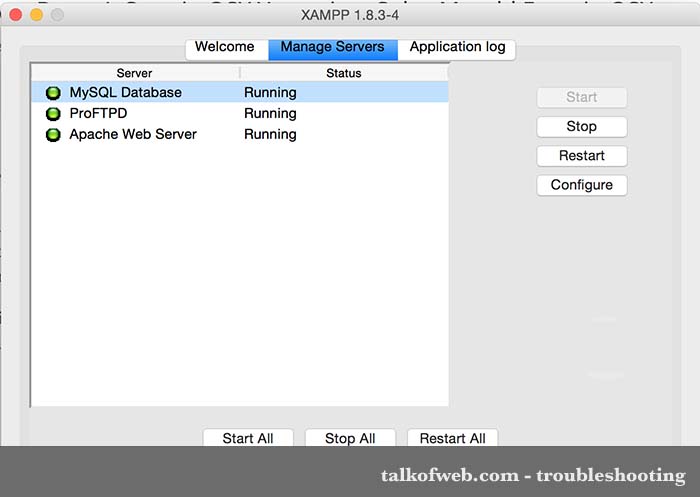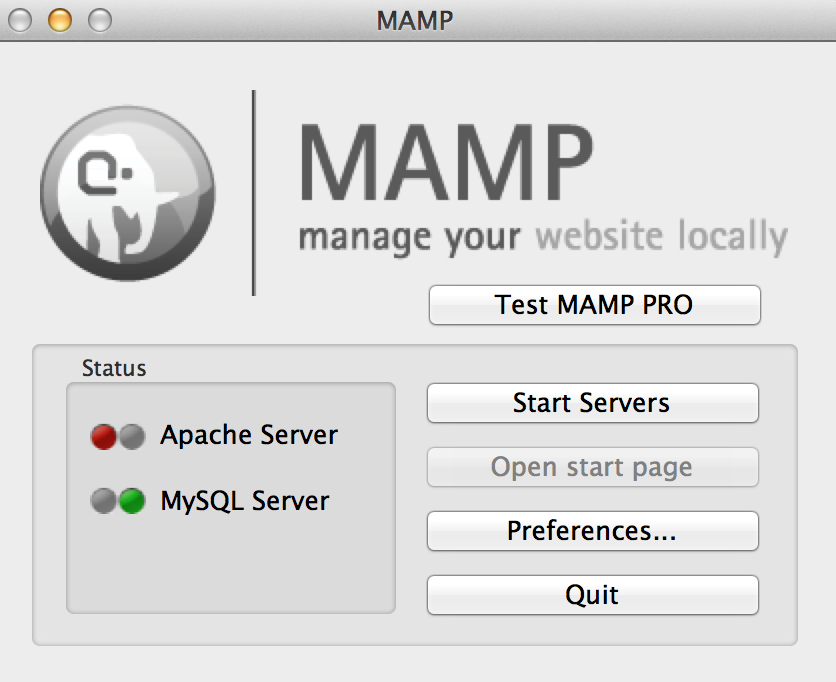- For a list of macOS versions that the MySQL server supports, see. MySQL for macOS is available in a number of different forms: Native Package Installer, which uses the native macOS installer (DMG) to walk you through the installation of MySQL. For more information, see Chapter 2, Installing MySQL on macOS Using Native Packages.
- When running MySQL8.0.18 on Mac OS X 10.14.6 Mojave, I tried executing this command: mysql SELECT. INTO OUTFILE file; I then ran into this error: The MySQL server is running with the -secure-file-priv option so it cannot execute this statement securefilepriv. When I ran this: mysql SHOW VARIABLES LIKE 'securefilepriv'; I got this.
Are you trying to start MySQL server? Or even stop or restart it? Learn how to start, stop, and restart MySQL on Windows, Mac, and Linux in this article.

Welcome back to another SecuringNinja tutorial. No cyber security researcher should be with out a database to practice their skills on, or just to store tons of relational data. Today we will show you how to install MySQL on a Mac. Having a local database is perfect for running websites locally, or for providing persistent storage for another application.
In this article we cover how to:
MySQL is very straight forward to install on a Mac. If you do not already have the Homebrew package manager for Mac you’ll need to install that first. If you would rather not install Homebrew you can also install MySQL using the DMG file available on the MySQL site.
Installing Homebrew on Mac
Lets start by opening up Terminal and installing Homebrew. Homebrew is a macOS package manager that makes installing packages on macOS a breeze.
To install Homebrew on Mac run the following command:
Once the install is complete go ahead and run an update to test that everything is working correctly.
With Homebrew installed it is a simple matter to install MySQL.
Installing MySQL on Mac with Brew
Installing MySQL with Brew is a breeze. All it takes is:

This will install the most recent version of the package available on Brew. As of this writing it is MySQL version 8.0. To install a different version simply append the version to the end of the package with an @ symbol. For example, to install MySQL 5.7 use:

If you don’t want to install Homebrew you can also install MySQL with the DMG file available for download as described below.
Installing MySQL with a DMG file
You can also install MySQL via the DMG file on the MySQL downloads page. This will add a MySQL preference pane in System Preferences as well. You can start and stop your server from here too.
First begin by downloading and mounting the DMG file available from the MySQL Community downloads page. Make sure you grab the appropriate DMG for your OS version.
Mount the DMG and double click the .pkg file to begin the installation.
Step through the installer installer and make a note of your temporary root password. You will need this for the initial connection to the server. DO NOT LOSE IT!
The server will require that you update your password on the first login. MySQL server is now installed. To start the server use launchctl or the MySQL preference pane in System Preferences. The server uses very few resources while running in the background so there really is no need to start and stop the server each time.
To start the server via launchctl:
This instructs MySQL to start when the system boots up.
You can also start and stop MySQL through the System Preferences pane. Open System Preferences and select MySQL:
And finally, start or stop the server as needed.
From this preference pane you can also edit the MySQL server configuration, re-initialize the database, and uninstall MySQL server entirely. We cover how to uninstall MySQL on Mac in the next section.
Uninstalling MySQL on Mac
If you installed MySQL via the DMG file method then uninstalling is extremely straight forward. Navigate to the MySQL preference pane in System Preferences, and click Uninstall. Thats it! MySQL has been uninstalled.
If you however installed MySQL using the Brew method described above, then there are a couple of extra steps.
Uninstalling MySQL on Mac with Brew
The steps below show how to uninstall MySQL installed with Brew. Begin by finding any running MySQL processes and stopping them. Then uninstall MySQL and remove all files.
What to do with your new database
Now that you’ve got a local database up and running you may want to take a look at how a SQL injection attack works. Your new database will be great for practice! If you have any issues getting your database up and running, please reach out in the comments below. We would love to assist you!
Oracle's MySQL is a popular open-source relational database management system that is based on Structured Query Language (SQL). It is frequently used in conjunction with PHP to enhance the capabilities of websites. PHP comes preloaded onto Mac computers, but MySQL does not.
When you create and test software or websites that require a MySQL database, it is handy to have MySQL installed on your computer. Installing MySQL on a Mac is easier than you might expect, particularly if you use the native installation package instead of the TAR package, which requires access and changes to the command line in Terminal mode.
Mysql For Mac Os
Installing MySQL Using the Native Installation Package

The free download for the Mac is the MySQL Community Server edition.
- Go to the MySQL website and download the latest version of MySQL for MacOS. Select the native package DMG archive version, not the compressed TAR version.
- Click the Download button next to the version you choose.
- You are prompted to sign up for an Oracle Web Account, but unless you want one, click No thanks, just start my download.
- In your downloads folder, find and double-click the file icon to mount the .dmg archive, which contains the installer.
- Double-click the icon for the MySQL package installer.
- Read the opening dialog screen and click Continue to begin the installation.
- Read the license terms. Click Continue and then Agree to continue.
- Click Install.
- Record the temporary password that displays during the installation process. This password cannot be recovered. You must save it. After you log in to MySQL, you are prompted to create a new password.
- Press Close on the Summary screen to complete the installation.

Php Mysql Server For Mac
The MySQL webpage contains documentation, instructions and change history for the software.
Mysql Server 5.7 For Mac
How to Start My SQL on a Mac
Mac Start Mysql Server
The MySQL server is installed on the Mac, but it does not load by default. Start MySQL by clicking Start using the MySQL Preference Pane, which was installed during the default installation. You can configure MySQL to automatically start when you turn on your computer using the MySQL Preference Pane.